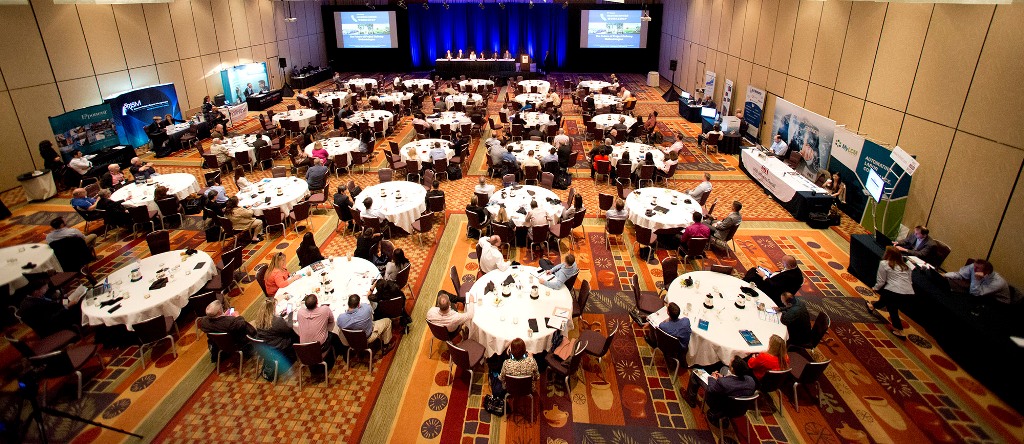More than 300 participants showed up at the Hyatt Regency Hotel in Indian Wells, CA, this month for the 55th annual Western Winter Workshop. Organized and hosted by the San Francisco Bay Area and Southern California Sections of AACE International, the event included a robust technical program with presentations by industry experts on scheduling, cost engineering, project management, risk, claims and BIM.
"The Western Winter Workshop is a best in class conference," says John Haynes of Hill International, who also serves as event chairman. "After 55 years the workshop has set a new trend in bringing together owners, contractors and consultants to a venue that is focused on recommended practices, sharing solutions, acknowledging challenges and creating lasting partnerships for the delivery of vital projects."
Donald R. McNatty, president and CEO of DRMcNatty & Associates, Inc, says the workshop is a great place for people in the project controls career field to "enhance their skills and broaden their relationships in an industry that continues to grow with career opportunities and evolve with constantly changing technology."
One of the most instructive session's that I attended at March 3 - 6 event was "The Future of Project Delivery Methodologies," which was moderated by Haynes and featured a panel of industry experts offering an owner's perspective of the pros and cons of various project delivery types.
Panelist Van Chapman Thompson, element manager for Los Angeles World Airports (LAX), said during the forum that airport owners such as LAX have come a long way in the past 10 years, going from a "design-bid-build exclusive organization to a fairly progressive organization that does a lot of hybrid delivery." Thompson, who has delivered LAX projects for more than 15 years, said the airport has been successful in delivering projects using CM-at-Risk and design-build and is currently embarking on other new methods.
Mark Kelley, vice president with aviation consulting for AECOM, said different delivery methods can be tricky for airport owners - which have typically worked with design-bid-build projects - to transition to a position where you are managing a design-build-finance-operate-maintain project.
"The risk elements that you are used to protecting throughout the course of the design and construction have now been shifted and it is hard sometimes for airport owners to truly understand their role," he said. "So it is really incumbent upon owners to make sure they are properly represented, properly understand their risk and make sure they are ready to take on that risk."
Michelle Boehm, Southern California regional director for the California High-Speed Rail Authority (CHSRA), said her organization currently starts their approach at design-build, but in the future they are looking at moving toward public-private-partnerships and also potentially design-build-finance-operate-maintain, "depending on how the ultimate vehicle procurement is arranged."
Boehm says the most important thing is to find a way that everybody has a stake in the game.
"The owner clearly has to have a stake in the game; we hold the risk and the responsibility for the financing, but we need the designers, the planners and the contractors to all have a stake in the game, and I think that’s where something like design-build and anything further to the right come into play to bring all of the parties together to make sure that everybody has a responsibility," she says. "From an owner's perspective we want certainty; we want to know that our project is going to be 'x' thing delivered at 'y' time for 'c' price, and we owners are working hard to figure out what is the best solution to get to that is."


Post a comment to this article
Report Abusive Comment